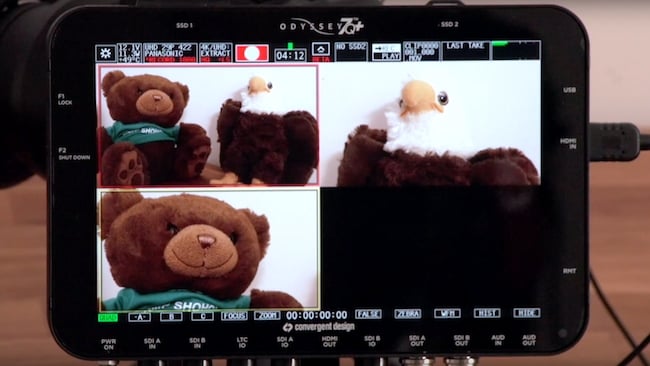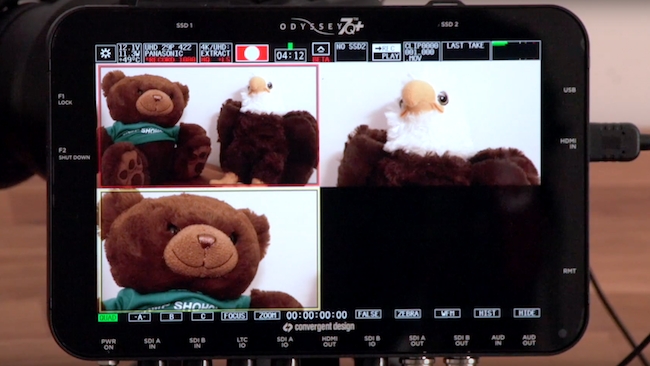
 Convergent Design Titan
Convergent Design Titan
Convergent technology has a very distinctive business strategy that becomes clearer with every passing month. Their Odyssey range of recorder/monitors has been around since early 2013, and when they appeared, we thought they were incredibly significant.
With hindsight, we were right, but not necessarily for the right reasons. It was certainly important to note that they had high quality OLED screens. This was a step beyond anything that their competitors had done then or since. They build quality was impressive. And it was pretty obvious from the price that there was something special inside.
It seems clear now that the processing power of the Odyssey range was and still is huge. The reason we know this is because three and a half years after the range was first released, we’re still seeing software releases that significantly improve the functionality of the devices.
In addition to a seemingly endless list of cameras that can record to the Odyssey, often in native raw formats, the same hardware can function as a multi input switcher and can even take a 4K image, select multiple areas from it, and treat these as independent camera feeds.
We’ll write more elsewhere about the trend towards treating new products as “platforms”, where relatively few hardware products are released, but to compensate for this, frequent software updates significantly upgrade performance.
But in showing that a battery powered device can derive several camera views from a single image, we’re surely seeing the start of a trend where an arbitrary set of camera angles can be extracted from an equally arbitrary number of cameras, whose outputs are stitched together in real time to give a virtual ultra-wide angle.
Today’s attempts at recording 360 degree video - sometimes in stereoscopic 3D - require software that can stitch together the output from multiple cameras into a “sphere” of video. Techniques for doing this are getting better all the time.
What Convergent has done with Titan shows the way to capturing all camera angles at once
With the arrival of 8K, it might not be long before we see units like the Odyssey taking the output from such a device and splitting it into many views, although it won’t be able to change the “position” of the camera. Or perhaps it might: there’s no reason why you shouldn’t take the output from two or more cameras, suitably positioned, and derive the view from a “virtual” camera that’s somewhere between them.
Convergent’s Titan (a software upgrade to the Odyssey) has shown the way ahead with this: it’s a product that’s out there to buy now, and, as such, it’s incredibly useful. This can only be the start of a much bigger trend.
Tags: Production


Comments